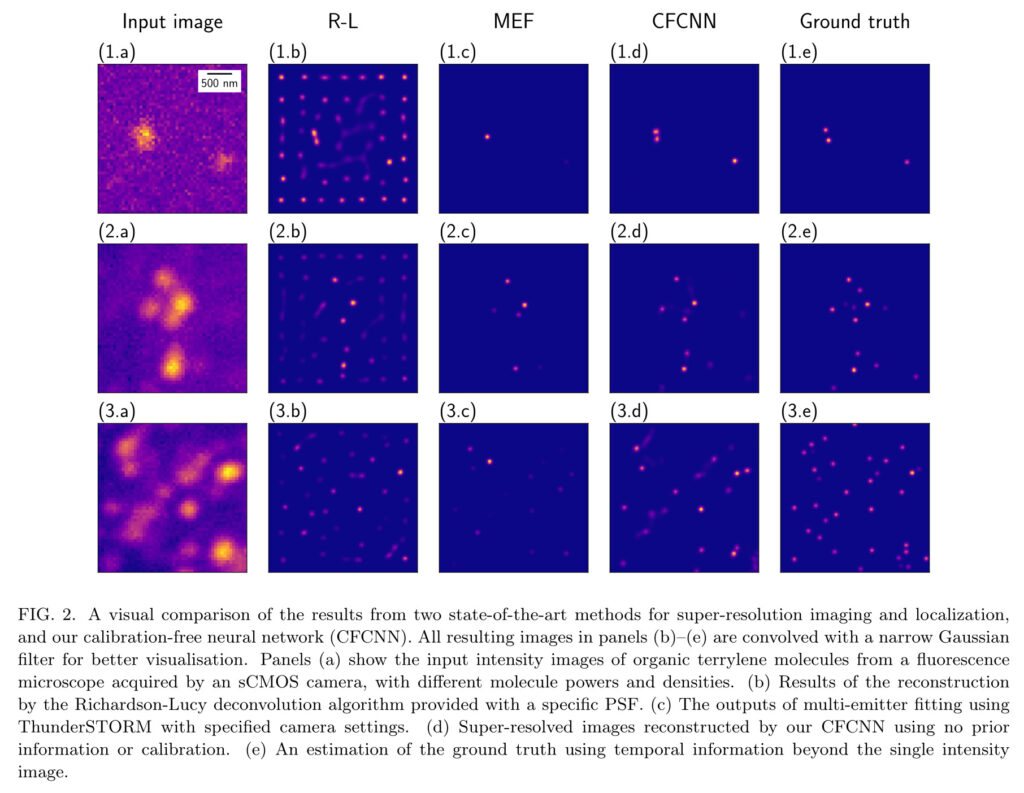Calibration-free single-frame super-resolution fluorescence microscopy: Super-resolution fluorescence microscopy has changed the way we look at life and materials, yet methods such as STORM or PALM still hinge on measuring the point-spread function of each microscope and recording thousands of sparsely blinking frames. These steps add minutes of acquisition, heavy light dose, and constant recalibration, limiting anything fast, fragile, or high-throughput.
Our new work solves that bottleneck with a calibration-free convolutional neural network, CFCNN, which turns one diffraction-limited frame into a super-resolved image. The network is trained only on synthetic data that span many numerical apertures, point-spread function shapes, and noise levels, so it does not need to be retrained or tuned for a new microscope or sample.
When tested on dense terrylene samples imaged for only 150 ms, CFCNN resolved fluorophores just 35 nm apart—about seven times beyond the Rayleigh limit for 580 nm light—using nothing but the single raw frame. Quantitatively, it beats two state-of-the-art single-image baselines, Richardson–Lucy deconvolution (given the exact PSF) and ThunderSTORM multi-emitter fitting (given a full set of camera and localization parameters), showing lower mean-absolute error and lower Kullback-Leibler divergence across the full range of signal-to-noise ratios that we examined.
Because the reconstruction is completed from a single snapshot, the light dose, photobleaching, and phototoxicity decrease by orders of magnitude compared with multi-frame localization approaches. The method also tolerates variations in point-spread function or background within the field of view, making it genuinely plug-and-play for multi-user facilities and high-content screens.
Beyond the immediate gains, the same synthetic-data calibration-free strategy opens a path to deeper and residual architectures, as well as higher up-sampling factors, which could push the single-frame resolution below 20 nm. Alternatively, it could be combined with SMLM to reduce the image stack sequence length by 90% while maintaining or even increasing accuracy.
In short, calibration-free single-frame super-resolution brings nanoscale detail to fast, dense, and light-sensitive samples on any wide-field microscope, with no special hardware, no retraining and no waiting.



